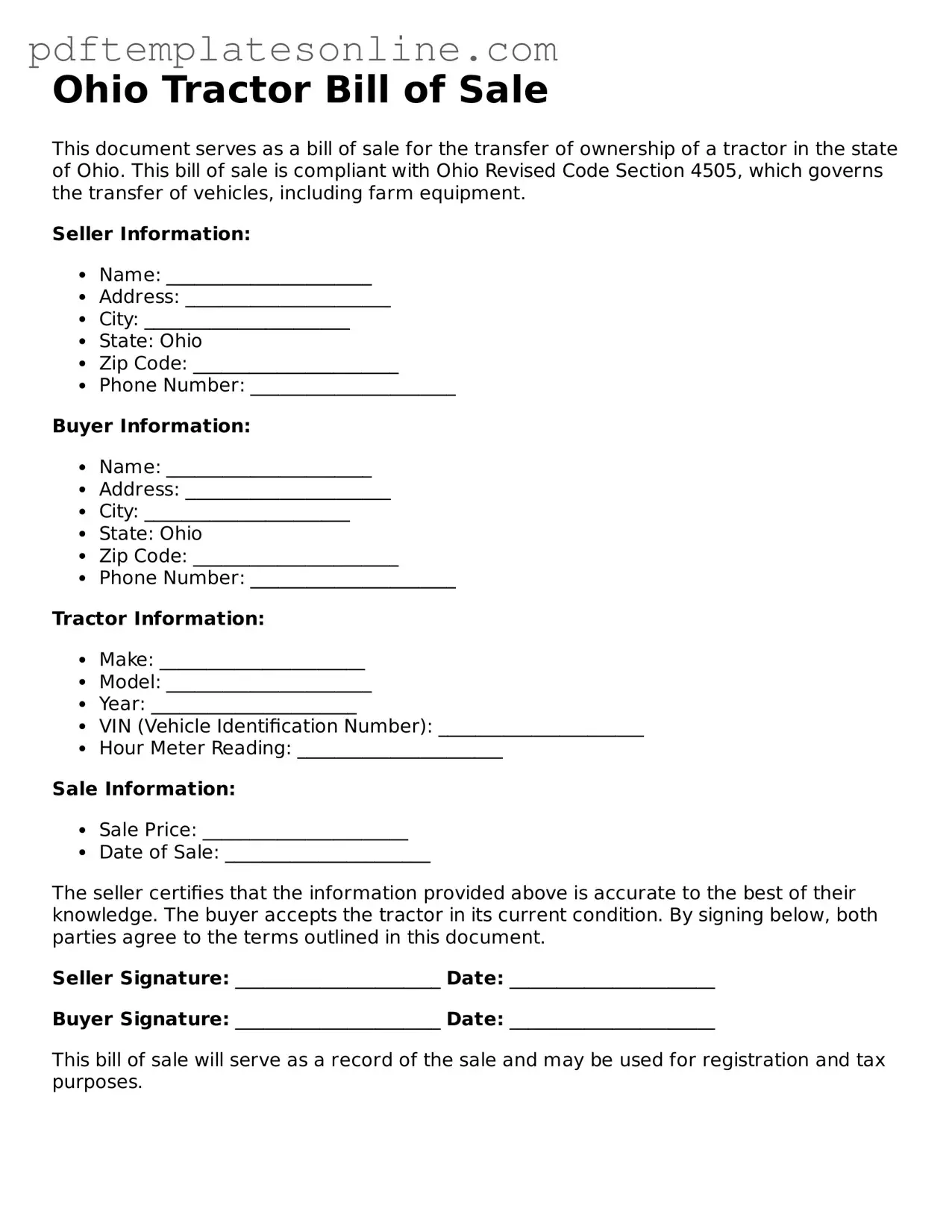Filling out the Ohio Tractor Bill of Sale form can seem straightforward, but many individuals make critical mistakes that can lead to complications later on. One common error is failing to include all necessary information about the tractor. This includes details like the make, model, year, and Vehicle Identification Number (VIN). Omitting any of this information can create confusion and may even affect the registration process.
Another frequent mistake is not providing accurate contact information for both the buyer and the seller. It’s essential to ensure that names, addresses, and phone numbers are correct. Inaccurate information can hinder communication and complicate any future transactions or disputes.
Some people neglect to date the form. The date is crucial because it establishes when the sale occurred. Without a date, it becomes challenging to prove ownership transfer and may lead to legal issues down the line.
Many individuals also forget to sign the form. Both the buyer and the seller must sign the document for it to be legally binding. A missing signature can render the bill of sale invalid, causing problems for both parties.
Another mistake involves using outdated or incorrect forms. Ohio may update its forms or requirements periodically. Using an old version can lead to unnecessary delays or rejections. Always check for the most current form before proceeding.
Some sellers may assume that a bill of sale is not necessary for a tractor transaction. However, having this document is important for legal protection. It serves as proof of sale and can be critical in resolving disputes.
In addition, people often forget to keep copies of the completed bill of sale. Both parties should retain a copy for their records. This documentation can be invaluable if any issues arise regarding ownership or payment.
Another common oversight is not including the sale price. This detail is essential for tax purposes and for establishing the value of the transaction. Leaving it blank can lead to complications with tax authorities.
Lastly, individuals may overlook the importance of including any warranties or conditions of the sale. If the tractor is sold "as-is," this should be clearly stated in the bill of sale. Failing to include this information can lead to misunderstandings about the condition of the tractor after the sale.
